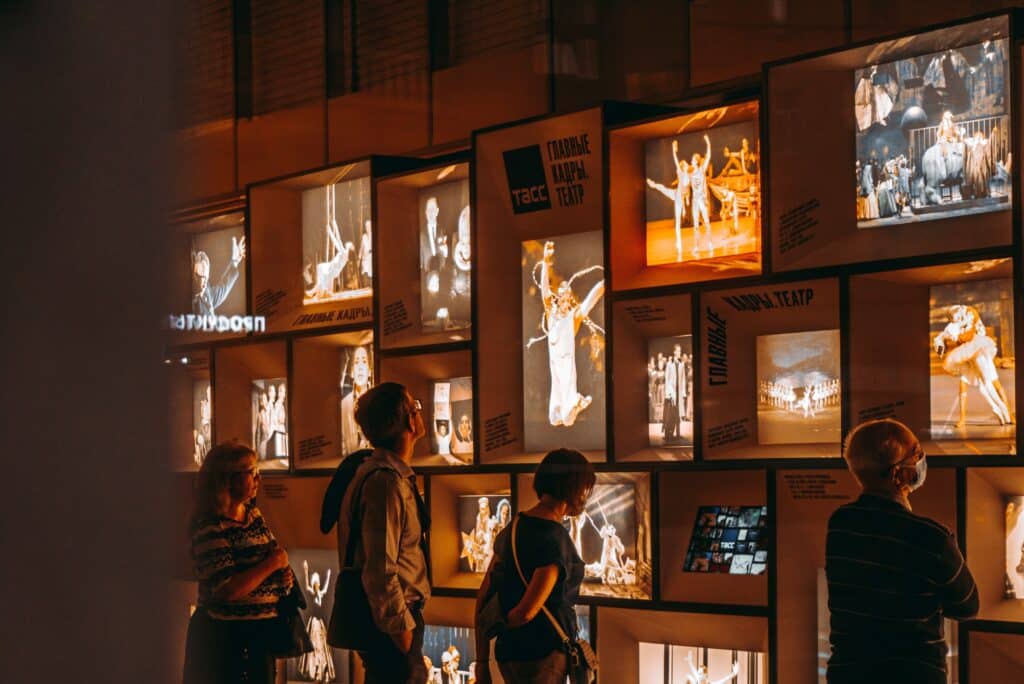Introduzione
Nel contesto museale contemporaneo, la pianificazione strategica a lungo termine è fondamentale per garantire la crescita e la sostenibilità delle istituzioni culturali. Un piano strategico pluriennale per musei ben strutturato non solo definisce gli obiettivi e le strategie operative, ma stabilisce anche indicatori chiave di performance (KPI) per monitorare i progressi e adattarsi alle sfide emergenti.
Questo articolo offre una guida dettagliata su come sviluppare e monitorare efficacemente un piano strategico pluriennale per i musei.
Cos’è un piano strategico pluriennale per musei?
Un piano strategico pluriennale è un documento che delinea la visione, la missione e gli obiettivi a lungo termine di un museo, solitamente su un arco temporale di 3-5 anni. Questo piano funge da roadmap, guidando le decisioni operative e allocando le risorse in modo coerente con la missione istituzionale. Ad esempio, il Settore Musei Civici di Bologna ha recentemente presentato il suo Piano Strategico Integrato 2025-2029, focalizzato su innovazione, valore sociale, sostenibilità, partecipazione, collezioni e networking.
Fasi chiave nella progettazione del piano strategico pluriennale per musei
1. Analisi preliminare
Prima di tutto, è essenziale condurre un’analisi SWOT (punti di forza, debolezze, opportunità e minacce) per comprendere la posizione attuale del museo. Questa valutazione interna ed esterna fornisce una base solida per la definizione degli obiettivi strategici.
2. Definizione della missione e della visione
La missione descrive lo scopo fondamentale del museo, mentre la visione rappresenta l’aspirazione futura. Una chiara articolazione di entrambe guida la direzione strategica e ispira il team.
3. Stabilire obiettivi strategici
Gli obiettivi dovrebbero essere SMART. SMART è un acronimo che indica le 5 qualità fondamentali che un obiettivo deve possedere: SPECIFIC (specifico), MEASURABLE (misurabile), ACHIEVABLE (raggiungibile), RELEVANT (rilevante), TIME-BASED (basato sul tempo). Ad esempio, aumentare il numero di visitatori del 20% entro due anni è un obiettivo SMART.
4. Sviluppo di strategie e azioni
Per ogni obiettivo, delineare strategie specifiche e piani d’azione dettagliati. Questo potrebbe includere programmi educativi, partnership comunitarie o iniziative di marketing digitale.
5. Allocazione delle risorse
Determinare le risorse necessarie, sia finanziarie che umane, e assicurarsi che siano allocate in modo efficiente per supportare le strategie pianificate.
Monitoraggio e valutazione del piano strategico pluriennale per musei
Una volta implementato il piano strategico pluriennale, è cruciale monitorare continuamente i progressi attraverso indicatori chiave di performance (KPI).
Identificazione dei KPI museali
I KPI sono metriche utilizzate per valutare l’efficacia delle strategie implementate. Nel contesto museale, alcuni KPI rilevanti includono:
- Numero di visitatori: Monitorare l’affluenza per valutare l’attrattiva delle mostre e delle attività.
- Coinvolgimento del pubblico: Misurato attraverso sondaggi sulla soddisfazione, partecipazione a eventi e interazioni sui social media.
- Soddisfazione dei visitatori: valutabile tramite un sistema di raccolta feedback attraverso questionari ad esempio.

Strumenti per monitorare i dati
L’adozione di strumenti tecnologici avanzati facilita la raccolta e l’analisi dei dati necessari per valutare i KPI. Ad esempio, molti musei italiani stanno scegliendo il sistema intuitivo e efficiente di monitoraggio dati di amuseapp.
Benchmarking e confronto
Confrontare i propri KPI con quelli di istituzioni simili può offrire spunti per miglioramenti. Un esempio significativo è il progetto di benchmarking museale realizzato dai Musei Reali di Torino, Palazzo Ducale di Mantova e Gallerie Estensi di Modena, con il supporto del Politecnico di Milano, che ha sviluppato un modello per misurare l’impatto dei musei sulla società.
Importanza della digitalizzazione nella pianificazione strategica
La digitalizzazione svolge un ruolo cruciale nella modernizzazione dei musei e nella loro capacità di raggiungere un pubblico più ampio. Tuttavia, una ricerca dell’Osservatorio Innovazione Digitale per la Cultura del Politecnico di Milano ha evidenziato che solo un terzo dei musei italiani dispone di un piano strategico a lungo termine per la digitalizzazione.
Questo dato sottolinea la necessità di integrare la trasformazione digitale nei piani strategici pluriennali per rimanere competitivi e rilevanti.
Conclusione
La pianificazione e il monitoraggio di un piano strategico pluriennale sono essenziali per il successo a lungo termine dei musei. Definendo chiaramente obiettivi strategici, utilizzando KPI museali pertinenti e monitorando i dati con strumenti adeguati, i musei possono migliorare la loro efficienza, attrattività e impatto sociale.
Investire nella digitalizzazione e nell’analisi dei dati non è più un’opzione, ma una necessità per garantire la sostenibilità e l’innovazione delle istituzioni culturali. Seguendo un approccio metodico e basato su evidenze, ogni museo può sviluppare un piano strategico pluriennale efficace, adattabile e orientato alla crescita.
amuseapp – la rivoluzione digitale per i luoghi culturali
amuseapp è molto più di una semplice audioguida: è una piattaforma digitale innovativa che trasforma l’esperienza dei visitatori e aiuta i musei a incrementare i ricavi.
Itinerari personalizzati con l’Intelligenza Artificiale. A differenza delle audioguide tradizionali, amuseapp utilizza l’intelligenza artificiale per creare percorsi su misura in base alle esigenze di ogni visitatore: bambini, persone con disabilità sensoriali, esperti, studenti e molte altre categorie.
Accessibilità in 30 lingue. Oggi solo il 20% dei musei offre contenuti in più di due lingue. Con amuseapp, i luoghi culturali possono abbattere questa barriera, generando automaticamente testi e audio in 30 lingue e rendendo il patrimonio culturale accessibile a tutti, ovunque.
Chatbot guida turistica virtuale in tempo reale. Grazie a un chatbot personalizzato, amuseapp offre ai visitatori una guida virtuale sempre disponibile, in grado di rispondere alle loro domande e arricchire l’esperienza di visita.
Raccolta donazioni semplice e sicura. Con amuseapp, i luoghi culturali possono raccogliere donazioni direttamente tramite l’app, in modo rapido, sicuro e intuitivo.
Feedback per un miglioramento continuo. amuseapp consente di raccogliere le opinioni dei visitatori sull’esperienza di visita, fornendo dati preziosi per ottimizzare i propri servizi.
Disponibile in modalità app o web app. La web app di amuseapp permette ai visitatori di accedere ai contenuti digitali del museo senza dover scaricare nessuna applicazione. L’app mobile di amuseapp è pensata per offrire un’esperienza più avanzata e personalizzabile. Scaricandola dagli store ufficiali, i visitatori possono beneficiare di funzionalità extra.
Un’unica soluzione, molteplici vantaggi. Con amuseapp, i luoghi culturali possono offrire un’esperienza innovativa, inclusiva e interattiva, migliorando al tempo stesso il proprio modello di sostenibilità.
Scopri di più su amuseapp.

